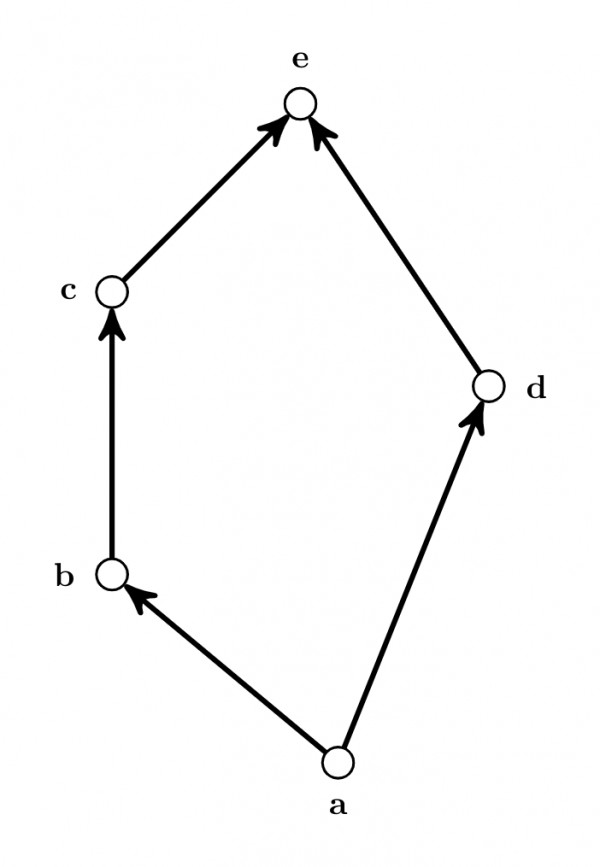Consider the set $X=\{a, b, c, d, e\}$ under partial ordering $R=\{(a,a), (a, b), (a, c), (a, d), (a, e), (b, b), (b, c), (b, e), (c, c), (c, e), (d, d), (d, e), (e, e) \}$
The Hasse diagram of the partial order $(X, R)$ is shown below.

The minimum number of ordered pairs that need to be added to $R$ to make $(X, R)$ a lattice is ______